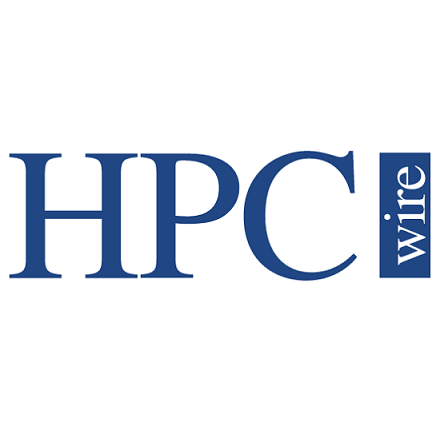
Australian Government Unveils New Defense, Weather Supercomputers
August 15, 2022
The Australian government has been busy on the supercomputing front. In just the last two weeks, the Australian Department of Defence and the Australian Bureau of Meteorology have both revealed major supercomputing updates. The Department of Defence, for its part, unveiled a new supercomputer: Taingiwilta, named after the word for “powerful” in the language of the... Read more…

Supercomputer Simulations Elucidate Shakes of Explosions, Earthquakes
August 13, 2022
Explosions are the bread and butter of Lawrence Livermore National Laboratory (LLNL), one of the labs under the auspices of the National Nuclear Security Administration (NNSA). But not all explosions, of course, are nuclear – and now, researchers at LLNL and waveform simulation startup Mondaic have created a new, supercomputer-powered model to model the ground shaking that ensues... Read more…

Supercomputer Models Explosives Critical for Nuclear Weapons
August 6, 2022
Lawrence Livermore National Laboratory (LLNL) is one of the laboratories that operates under the auspices of the National Nuclear Security Administration (NNSA), which manages the United States’ stockpile of nuclear weapons. Amid major efforts to modernize that stockpile, LLNL has announced that researchers from its own Energetic Materials Center... Read more…

Exascale Climate Model Used to Examine the Climate Consequences of Nuclear War
December 3, 2020
Often, we can tend to examine global crises in isolation – however, they can have surprising feedback effects on one another. The COVID-19 pandemic, for insta Read more…

HPE Strikes Deal to Provide Crossroads, a New Supercomputer for the Nuclear Stockpile
October 1, 2020
The three national laboratories (Lawrence Livermore, Los Alamos and Sandia) that support the National Nuclear Security Administration (NNSA) occupy a strange role in the landscape of government-funded research and supercomputing. The NNSA manages the military applications of nuclear science... Read more…

Nuclear Deterrence: In Supercomputing We Trust
July 15, 2011
Not everyone is on board with the NNSA's Stockpile Stewardship Program. Read more…

Lawrence Livermore Prepares for 20 Petaflop Blue Gene/Q
February 3, 2009
Roadrunner and Jaguar, the DOE supercomputers that launched the petaflop era last year, will soon be eclipsed by new machines more than ten times as powerful. IBM and the US National Nuclear Security Administration announced on Tuesday that in 2011 Lawrence Livermore National Laboratory will install a 20 petaflop system to provide computational support for the country's aging nuclear weapons. Read more…

- Click Here for More Headlines

Whitepaper
Transforming Industrial and Automotive Manufacturing
In this era, expansion in digital infrastructure capacity is inevitable. Parallel to this, climate change consciousness is also rising, making sustainability a mandatory part of the organization’s functioning. As computing workloads such as AI and HPC continue to surge, so does the energy consumption, posing environmental woes. IT departments within organizations have a crucial role in combating this challenge. They can significantly drive sustainable practices by influencing newer technologies and process adoption that aid in mitigating the effects of climate change.
While buying more sustainable IT solutions is an option, partnering with IT solutions providers, such and Lenovo and Intel, who are committed to sustainability and aiding customers in executing sustainability strategies is likely to be more impactful.
Learn how Lenovo and Intel, through their partnership, are strongly positioned to address this need with their innovations driving energy efficiency and environmental stewardship.
Download Now
Sponsored by Lenovo
Whitepaper
How Direct Liquid Cooling Improves Data Center Energy Efficiency
Data centers are experiencing increasing power consumption, space constraints and cooling demands due to the unprecedented computing power required by today’s chips and servers. HVAC cooling systems consume approximately 40% of a data center’s electricity. These systems traditionally use air conditioning, air handling and fans to cool the data center facility and IT equipment, ultimately resulting in high energy consumption and high carbon emissions. Data centers are moving to direct liquid cooled (DLC) systems to improve cooling efficiency thus lowering their PUE, operating expenses (OPEX) and carbon footprint.
This paper describes how CoolIT Systems (CoolIT) meets the need for improved energy efficiency in data centers and includes case studies that show how CoolIT’s DLC solutions improve energy efficiency, increase rack density, lower OPEX, and enable sustainability programs. CoolIT is the global market and innovation leader in scalable DLC solutions for the world’s most demanding computing environments. CoolIT’s end-to-end solutions meet the rising demand in cooling and the rising demand for energy efficiency.
Download Now
Sponsored by CoolIT
Advanced Scale Career Development & Workforce Enhancement Center
Featured Advanced Scale Jobs:
HPCwire Resource Library
HPCwire Product Showcase
© 2024 HPCwire. All Rights Reserved. A Tabor Communications Publication
HPCwire is a registered trademark of Tabor Communications, Inc. Use of this site is governed by our Terms of Use and Privacy Policy.
Reproduction in whole or in part in any form or medium without express written permission of Tabor Communications, Inc. is prohibited.
























